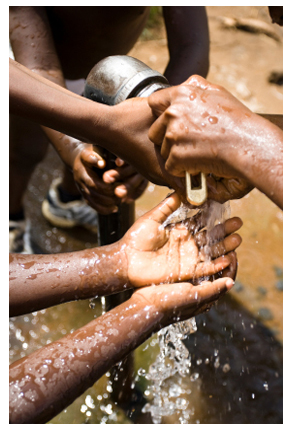Water Treatment
 3% of the total water on Earth is fresh, most is frozen, only 0.3% is available for the living planet.
3% of the total water on Earth is fresh, most is frozen, only 0.3% is available for the living planet.
Our proprietary technology addresses the growing demand for potable water around the globe. Ultra-Lyte®, which has been re-branded as EcoLyte® for water sanitation applications, transforms both producing and non-producing wells into reliable long-lived sources for human, animal and agricultural consumption
The rehabilitation of boreholes or water wells is a cost effective and non-invasive method of ensuring a constant supply of potable water. The practice is to restore yield without having to re-drill new boreholes at exorbitant costs. In developed nations, there are federal and municipal constraints put upon drilling of new wells due mainly to environmental concerns.
Clarentis Technologies’ solutions transform current methods of rehabilitating wells by using existing water in the wells and through the practice of on-site electrolysis as a cleansing agent. This is a harmless, natural method that requires no specialized equipment and can be completed in a matter of hours.
Bio-Fouling
EcoLyte® rehabilitates wells that are classified: Dried-up
When water yields from boreholes declines, the source is deemed to have "dried up". The catalyst for most holes "drying up" is in reality biological fouling (bio-film). It is estimated that approximately 80% of the issues pertaining to water wells were caused by biological fouling. Nearly 50% of boreholes worldwide lose yield as a result of bio-fouling. It chokes both the aquifer as well as the ground surrounding the borehole through which the water to the borehole flows, including the screens (casing and pump) within the borehole. Supply diminishes and the hole achieves a status of ‘non-viability’.
MIC (Microbial Induced Corrosion) bio-film is another chief cause effecting piping, screens, membranes, filters and pumps. It is estimated that MIC can shorten the operational life of a pump by more than half.
EcoLyte® kills the most virulent waterborne pathogens and bacterium present in wells and water supplies prevalent in developing countries such as Tuberculosis, Clostridium difficile, Staphylococcus aureus, Pseudomonas aeruginosa, Norovirus, Legionella and many other known pathogens.
EcoLyte® has been proven effective in the treatment of both potable and wastewater systems. Its biocidal capabilities can be applied anywhere water is used or processed by dosing it directly into the system, without causing a strong chlorine taste or smell. Treated water can also eliminate or reduce pathogens from surfaces it contacts. Similarly, equipment (ice machines, dental unit water systems, beverage dispensers, endoscopes, countertops, etc.) in contact with treated water will be cleared or reduced of pathogens and be kept free of mineralization and biofilm.
Water and water distribution systems in facilities (hospitals, hotels, dental clinics, nursing homes, prisons, industrial plants, agricultural/food processing plants, schools, restaurants, and homes, etc.), and equipment (such as cooling towers, evaporative coolers, misters, etc.) are all subject to microbial contamination. Various studies and incidents of infection have revealed waterborne pathogens including Staphylococcus, Streptococcus, E. coli, Cryptosporidium, Giardia Lamblia, Listeria and Legionella, the bacterium that causes Legionnaires’ disease. Contamination may come from two basic sources: contamination in water received from the source and contamination from reverse migration.
Reverse migration of bacteria is another source of contamination within water distribution systems. American Dental Association studies show that contamination begins at the discharge point of water appliances and migrates back to the source of the water. Microbial populations increase rapidly, migrating up inside the water line, even when using sterile water, flushing the line between uses and flushing the system with bleach once a week. Sinks, faucets, showerheads and many other types of water equipment in any kind of facility are constantly being exposed to various human and environmental contaminants. These contaminants are pronounced in high use settings like hotels, hospitals, restaurants and other areas used by numerous people who may be in various stages of transmitting infectious bacteria.
Whether its source is from municipality or well-supplied water, or from reverse migration, bacteria survive and grow within cold and hot water distribution systems partly because the chlorine residual levels of municipal water treatment (between .5 - 1.5 ppm) are not sufficient to destroy all contaminants.